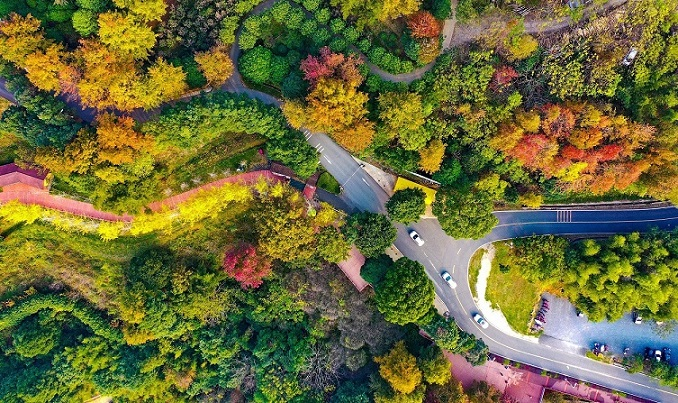By Zhao Shan
Recently, China Tourism Academy issued seven reports on Chinese tourism to summarize the performance of the sector this year.
According to the academy, new products and business models have emerged in the domestic tourism market, and niche sub-markets such as study tours, family trips, road trips and camping have seen flourishing development.
A report on domestic tourism said that there was an obvious shrinkage in both the distance of trips and the radius of tourists’ activities at their destinations this year, adding that 81.24 percent of domestic trips were made within provinces.
It said domestic trips this year present features of short time, short distance and high frequency, with new highlights such as mini vacations and hotel-staycations.
New products and business models of domestic tourism are favored by tourists. Driven by the 2022 Winter Olympics in Beijing, outdoor tourism is thriving, especially in Beijing and Zhangjiakou, where the Winter Olympics was hosted. More and more people have joined skiing, camping, hiking, mountaineering, horse riding, grass skiing and rafting to get close to nature.
In summer this year, waterside activities, countryside leisure, and trips for escaping the heat were popular among tourists.
A report on leisure tourism said the national leisure time has been significantly improved, and leisure activities at weekends are becoming regular. Short-distance trips have been frequently made across the country since the outbreak of the COVID-19 pandemic, and leisure activities were often carried out in places one to three kilometers from homes.
Leisure activities of Chinese people were diverse and prevalent in the life of urban residents. The number of urban residents visiting museums, exhibitions and science museums was on a rise.
Cultural tourism has gained bigger popularity among Chinese residents. More and more museums started exploring new methods to present visitors with individualized and immersive experiences and vitalize history and culture, bringing people closer to culture. During the National Day holiday this year, 93 percent of tourists joined cultural activities.
Consumption scenarios of tourism became diversified. Various activities can satisfy people’s different demands for tourism and leisure, including open spaces such as community gardens, urban pedestrian lanes, urban and suburban parks and national parks, commercial places such as restaurants, bars, coffee shops, shopping centers, wet markets, hotels and B&Bs, as well as cultural venues such as libraries, cultural clubs, museums, art galleries, cinemas, concert halls and cinemas.
The changing demands of tourists gave birth to new business models of leisure tourism. For instance, the Dewey Center Beijing has launched a light show themed on the works by Vincent van Gogh and Claude Monet; Jiaxing in east China’s Zhejiang province has built a chocolate-themed town. These new consumption scenarios have created infinite possibilities for the innovation and construction of scenic spots.
Scenic spots in China have also contributed to rural vitalization and played an important role in promoting common prosperity.
In the past three years, tourism bucked the trend in suburban areas in the country. Rural tourism used to depend on local scenic spots, but now villages have become part of the scenery.
The pattern of rural tourism has been changed by consumption scenarios defined by tourists. Every attractive scene in the countryside, be it an idyllic rural resident building, a time-worn countryside passage, or a tavern in the woods, is a great place to go to for urban tourists.












